Bacterial Infection
Viral Infection
Fungal Infection
Autoimmune Infection
Physical Examination
Imaging Tests
Blood Tests
Salivary Gland Biopsy
Antibiotics
Surgery
Antiviral Medications
Hydration Therapy
Pediatric
Adult
Geriatric
North America
Europe
South America
Asia Pacific
Middle East and Africa
North America Outlook (USD Billion, 2019-2035)
North America Salivary Gland Infection Market by Type of Infection Type
Bacterial Infection
Viral Infection
Fungal Infection
Autoimmune Infection
North America Salivary Gland Infection Market by Diagnosis Method Type
Physical Examination
Imaging Tests
Blood Tests
Salivary Gland Biopsy
North America Salivary Gland Infection Market by Treatment Type
Antibiotics
Surgery
Antiviral Medications
Hydration Therapy
North America Salivary Gland Infection Market by Patient Age Group Type
Pediatric
Adult
Geriatric
North America Salivary Gland Infection Market by Regional Type
US
Canada
US Outlook (USD Billion, 2019-2035)
US Salivary Gland Infection Market by Type of Infection Type
Bacterial Infection
Viral Infection
Fungal Infection
Autoimmune Infection
US Salivary Gland Infection Market by Diagnosis Method Type
Physical Examination
Imaging Tests
Blood Tests
Salivary Gland Biopsy
US Salivary Gland Infection Market by Treatment Type
Antibiotics
Surgery
Antiviral Medications
Hydration Therapy
US Salivary Gland Infection Market by Patient Age Group Type
Pediatric
Adult
Geriatric
CANADA Outlook (USD Billion, 2019-2035)
CANADA Salivary Gland Infection Market by Type of Infection Type
Bacterial Infection
Viral Infection
Fungal Infection
Autoimmune Infection
CANADA Salivary Gland Infection Market by Diagnosis Method Type
Physical Examination
Imaging Tests
Blood Tests
Salivary Gland Biopsy
CANADA Salivary Gland Infection Market by Treatment Type
Antibiotics
Surgery
Antiviral Medications
Hydration Therapy
CANADA Salivary Gland Infection Market by Patient Age Group Type
Pediatric
Adult
Geriatric
Europe Outlook (USD Billion, 2019-2035)
Europe Salivary Gland Infection Market by Type of Infection Type
Bacterial Infection
Viral Infection
Fungal Infection
Autoimmune Infection
Europe Salivary Gland Infection Market by Diagnosis Method Type
Physical Examination
Imaging Tests
Blood Tests
Salivary Gland Biopsy
Europe Salivary Gland Infection Market by Treatment Type
Antibiotics
Surgery
Antiviral Medications
Hydration Therapy
Europe Salivary Gland Infection Market by Patient Age Group Type
Pediatric
Adult
Geriatric
Europe Salivary Gland Infection Market by Regional Type
Germany
UK
France
Russia
Italy
Spain
Rest of Europe
GERMANY Outlook (USD Billion, 2019-2035)
GERMANY Salivary Gland Infection Market by Type of Infection Type
Bacterial Infection
Viral Infection
Fungal Infection
Autoimmune Infection
GERMANY Salivary Gland Infection Market by Diagnosis Method Type
Physical Examination
Imaging Tests
Blood Tests
Salivary Gland Biopsy
GERMANY Salivary Gland Infection Market by Treatment Type
Antibiotics
Surgery
Antiviral Medications
Hydration Therapy
GERMANY Salivary Gland Infection Market by Patient Age Group Type
Pediatric
Adult
Geriatric
UK Outlook (USD Billion, 2019-2035)
UK Salivary Gland Infection Market by Type of Infection Type
Bacterial Infection
Viral Infection
Fungal Infection
Autoimmune Infection
UK Salivary Gland Infection Market by Diagnosis Method Type
Physical Examination
Imaging Tests
Blood Tests
Salivary Gland Biopsy
UK Salivary Gland Infection Market by Treatment Type
Antibiotics
Surgery
Antiviral Medications
Hydration Therapy
UK Salivary Gland Infection Market by Patient Age Group Type
Pediatric
Adult
Geriatric
FRANCE Outlook (USD Billion, 2019-2035)
FRANCE Salivary Gland Infection Market by Type of Infection Type
Bacterial Infection
Viral Infection
Fungal Infection
Autoimmune Infection
FRANCE Salivary Gland Infection Market by Diagnosis Method Type
Physical Examination
Imaging Tests
Blood Tests
Salivary Gland Biopsy
FRANCE Salivary Gland Infection Market by Treatment Type
Antibiotics
Surgery
Antiviral Medications
Hydration Therapy
FRANCE Salivary Gland Infection Market by Patient Age Group Type
Pediatric
Adult
Geriatric
RUSSIA Outlook (USD Billion, 2019-2035)
RUSSIA Salivary Gland Infection Market by Type of Infection Type
Bacterial Infection
Viral Infection
Fungal Infection
Autoimmune Infection
RUSSIA Salivary Gland Infection Market by Diagnosis Method Type
Physical Examination
Imaging Tests
Blood Tests
Salivary Gland Biopsy
RUSSIA Salivary Gland Infection Market by Treatment Type
Antibiotics
Surgery
Antiviral Medications
Hydration Therapy
RUSSIA Salivary Gland Infection Market by Patient Age Group Type
Pediatric
Adult
Geriatric
ITALY Outlook (USD Billion, 2019-2035)
ITALY Salivary Gland Infection Market by Type of Infection Type
Bacterial Infection
Viral Infection
Fungal Infection
Autoimmune Infection
ITALY Salivary Gland Infection Market by Diagnosis Method Type
Physical Examination
Imaging Tests
Blood Tests
Salivary Gland Biopsy
ITALY Salivary Gland Infection Market by Treatment Type
Antibiotics
Surgery
Antiviral Medications
Hydration Therapy
ITALY Salivary Gland Infection Market by Patient Age Group Type
Pediatric
Adult
Geriatric
SPAIN Outlook (USD Billion, 2019-2035)
SPAIN Salivary Gland Infection Market by Type of Infection Type
Bacterial Infection
Viral Infection
Fungal Infection
Autoimmune Infection
SPAIN Salivary Gland Infection Market by Diagnosis Method Type
Physical Examination
Imaging Tests
Blood Tests
Salivary Gland Biopsy
SPAIN Salivary Gland Infection Market by Treatment Type
Antibiotics
Surgery
Antiviral Medications
Hydration Therapy
SPAIN Salivary Gland Infection Market by Patient Age Group Type
Pediatric
Adult
Geriatric
REST OF EUROPE Outlook (USD Billion, 2019-2035)
REST OF EUROPE Salivary Gland Infection Market by Type of Infection Type
Bacterial Infection
Viral Infection
Fungal Infection
Autoimmune Infection
REST OF EUROPE Salivary Gland Infection Market by Diagnosis Method Type
Physical Examination
Imaging Tests
Blood Tests
Salivary Gland Biopsy
REST OF EUROPE Salivary Gland Infection Market by Treatment Type
Antibiotics
Surgery
Antiviral Medications
Hydration Therapy
REST OF EUROPE Salivary Gland Infection Market by Patient Age Group Type
Pediatric
Adult
Geriatric
APAC Outlook (USD Billion, 2019-2035)
APAC Salivary Gland Infection Market by Type of Infection Type
Bacterial Infection
Viral Infection
Fungal Infection
Autoimmune Infection
APAC Salivary Gland Infection Market by Diagnosis Method Type
Physical Examination
Imaging Tests
Blood Tests
Salivary Gland Biopsy
APAC Salivary Gland Infection Market by Treatment Type
Antibiotics
Surgery
Antiviral Medications
Hydration Therapy
APAC Salivary Gland Infection Market by Patient Age Group Type
Pediatric
Adult
Geriatric
APAC Salivary Gland Infection Market by Regional Type
China
India
Japan
South Korea
Malaysia
Thailand
Indonesia
Rest of APAC
CHINA Outlook (USD Billion, 2019-2035)
CHINA Salivary Gland Infection Market by Type of Infection Type
Bacterial Infection
Viral Infection
Fungal Infection
Autoimmune Infection
CHINA Salivary Gland Infection Market by Diagnosis Method Type
Physical Examination
Imaging Tests
Blood Tests
Salivary Gland Biopsy
CHINA Salivary Gland Infection Market by Treatment Type
Antibiotics
Surgery
Antiviral Medications
Hydration Therapy
CHINA Salivary Gland Infection Market by Patient Age Group Type
Pediatric
Adult
Geriatric
INDIA Outlook (USD Billion, 2019-2035)
INDIA Salivary Gland Infection Market by Type of Infection Type
Bacterial Infection
Viral Infection
Fungal Infection
Autoimmune Infection
INDIA Salivary Gland Infection Market by Diagnosis Method Type
Physical Examination
Imaging Tests
Blood Tests
Salivary Gland Biopsy
INDIA Salivary Gland Infection Market by Treatment Type
Antibiotics
Surgery
Antiviral Medications
Hydration Therapy
INDIA Salivary Gland Infection Market by Patient Age Group Type
Pediatric
Adult
Geriatric
JAPAN Outlook (USD Billion, 2019-2035)
JAPAN Salivary Gland Infection Market by Type of Infection Type
Bacterial Infection
Viral Infection
Fungal Infection
Autoimmune Infection
JAPAN Salivary Gland Infection Market by Diagnosis Method Type
Physical Examination
Imaging Tests
Blood Tests
Salivary Gland Biopsy
JAPAN Salivary Gland Infection Market by Treatment Type
Antibiotics
Surgery
Antiviral Medications
Hydration Therapy
JAPAN Salivary Gland Infection Market by Patient Age Group Type
Pediatric
Adult
Geriatric
SOUTH KOREA Outlook (USD Billion, 2019-2035)
SOUTH KOREA Salivary Gland Infection Market by Type of Infection Type
Bacterial Infection
Viral Infection
Fungal Infection
Autoimmune Infection
SOUTH KOREA Salivary Gland Infection Market by Diagnosis Method Type
Physical Examination
Imaging Tests
Blood Tests
Salivary Gland Biopsy
SOUTH KOREA Salivary Gland Infection Market by Treatment Type
Antibiotics
Surgery
Antiviral Medications
Hydration Therapy
SOUTH KOREA Salivary Gland Infection Market by Patient Age Group Type
Pediatric
Adult
Geriatric
MALAYSIA Outlook (USD Billion, 2019-2035)
MALAYSIA Salivary Gland Infection Market by Type of Infection Type
Bacterial Infection
Viral Infection
Fungal Infection
Autoimmune Infection
MALAYSIA Salivary Gland Infection Market by Diagnosis Method Type
Physical Examination
Imaging Tests
Blood Tests
Salivary Gland Biopsy
MALAYSIA Salivary Gland Infection Market by Treatment Type
Antibiotics
Surgery
Antiviral Medications
Hydration Therapy
MALAYSIA Salivary Gland Infection Market by Patient Age Group Type
Pediatric
Adult
Geriatric
THAILAND Outlook (USD Billion, 2019-2035)
THAILAND Salivary Gland Infection Market by Type of Infection Type
Bacterial Infection
Viral Infection
Fungal Infection
Autoimmune Infection
THAILAND Salivary Gland Infection Market by Diagnosis Method Type
Physical Examination
Imaging Tests
Blood Tests
Salivary Gland Biopsy
THAILAND Salivary Gland Infection Market by Treatment Type
Antibiotics
Surgery
Antiviral Medications
Hydration Therapy
THAILAND Salivary Gland Infection Market by Patient Age Group Type
Pediatric
Adult
Geriatric
INDONESIA Outlook (USD Billion, 2019-2035)
INDONESIA Salivary Gland Infection Market by Type of Infection Type
Bacterial Infection
Viral Infection
Fungal Infection
Autoimmune Infection
INDONESIA Salivary Gland Infection Market by Diagnosis Method Type
Physical Examination
Imaging Tests
Blood Tests
Salivary Gland Biopsy
INDONESIA Salivary Gland Infection Market by Treatment Type
Antibiotics
Surgery
Antiviral Medications
Hydration Therapy
INDONESIA Salivary Gland Infection Market by Patient Age Group Type
Pediatric
Adult
Geriatric
REST OF APAC Outlook (USD Billion, 2019-2035)
REST OF APAC Salivary Gland Infection Market by Type of Infection Type
Bacterial Infection
Viral Infection
Fungal Infection
Autoimmune Infection
REST OF APAC Salivary Gland Infection Market by Diagnosis Method Type
Physical Examination
Imaging Tests
Blood Tests
Salivary Gland Biopsy
REST OF APAC Salivary Gland Infection Market by Treatment Type
Antibiotics
Surgery
Antiviral Medications
Hydration Therapy
REST OF APAC Salivary Gland Infection Market by Patient Age Group Type
Pediatric
Adult
Geriatric
South America Outlook (USD Billion, 2019-2035)
South America Salivary Gland Infection Market by Type of Infection Type
Bacterial Infection
Viral Infection
Fungal Infection
Autoimmune Infection
South America Salivary Gland Infection Market by Diagnosis Method Type
Physical Examination
Imaging Tests
Blood Tests
Salivary Gland Biopsy
South America Salivary Gland Infection Market by Treatment Type
Antibiotics
Surgery
Antiviral Medications
Hydration Therapy
South America Salivary Gland Infection Market by Patient Age Group Type
Pediatric
Adult
Geriatric
South America Salivary Gland Infection Market by Regional Type
Brazil
Mexico
Argentina
Rest of South America
BRAZIL Outlook (USD Billion, 2019-2035)
BRAZIL Salivary Gland Infection Market by Type of Infection Type
Bacterial Infection
Viral Infection
Fungal Infection
Autoimmune Infection
BRAZIL Salivary Gland Infection Market by Diagnosis Method Type
Physical Examination
Imaging Tests
Blood Tests
Salivary Gland Biopsy
BRAZIL Salivary Gland Infection Market by Treatment Type
Antibiotics
Surgery
Antiviral Medications
Hydration Therapy
BRAZIL Salivary Gland Infection Market by Patient Age Group Type
Pediatric
Adult
Geriatric
MEXICO Outlook (USD Billion, 2019-2035)
MEXICO Salivary Gland Infection Market by Type of Infection Type
Bacterial Infection
Viral Infection
Fungal Infection
Autoimmune Infection
MEXICO Salivary Gland Infection Market by Diagnosis Method Type
Physical Examination
Imaging Tests
Blood Tests
Salivary Gland Biopsy
MEXICO Salivary Gland Infection Market by Treatment Type
Antibiotics
Surgery
Antiviral Medications
Hydration Therapy
MEXICO Salivary Gland Infection Market by Patient Age Group Type
Pediatric
Adult
Geriatric
ARGENTINA Outlook (USD Billion, 2019-2035)
ARGENTINA Salivary Gland Infection Market by Type of Infection Type
Bacterial Infection
Viral Infection
Fungal Infection
Autoimmune Infection
ARGENTINA Salivary Gland Infection Market by Diagnosis Method Type
Physical Examination
Imaging Tests
Blood Tests
Salivary Gland Biopsy
ARGENTINA Salivary Gland Infection Market by Treatment Type
Antibiotics
Surgery
Antiviral Medications
Hydration Therapy
ARGENTINA Salivary Gland Infection Market by Patient Age Group Type
Pediatric
Adult
Geriatric
REST OF SOUTH AMERICA Outlook (USD Billion, 2019-2035)
REST OF SOUTH AMERICA Salivary Gland Infection Market by Type of Infection Type
Bacterial Infection
Viral Infection
Fungal Infection
Autoimmune Infection
REST OF SOUTH AMERICA Salivary Gland Infection Market by Diagnosis Method Type
Physical Examination
Imaging Tests
Blood Tests
Salivary Gland Biopsy
REST OF SOUTH AMERICA Salivary Gland Infection Market by Treatment Type
Antibiotics
Surgery
Antiviral Medications
Hydration Therapy
REST OF SOUTH AMERICA Salivary Gland Infection Market by Patient Age Group Type
Pediatric
Adult
Geriatric
MEA Outlook (USD Billion, 2019-2035)
MEA Salivary Gland Infection Market by Type of Infection Type
Bacterial Infection
Viral Infection
Fungal Infection
Autoimmune Infection
MEA Salivary Gland Infection Market by Diagnosis Method Type
Physical Examination
Imaging Tests
Blood Tests
Salivary Gland Biopsy
MEA Salivary Gland Infection Market by Treatment Type
Antibiotics
Surgery
Antiviral Medications
Hydration Therapy
MEA Salivary Gland Infection Market by Patient Age Group Type
Pediatric
Adult
Geriatric
MEA Salivary Gland Infection Market by Regional Type
GCC Countries
South Africa
Rest of MEA
GCC COUNTRIES Outlook (USD Billion, 2019-2035)
GCC COUNTRIES Salivary Gland Infection Market by Type of Infection Type
Bacterial Infection
Viral Infection
Fungal Infection
Autoimmune Infection
GCC COUNTRIES Salivary Gland Infection Market by Diagnosis Method Type
Physical Examination
Imaging Tests
Blood Tests
Salivary Gland Biopsy
GCC COUNTRIES Salivary Gland Infection Market by Treatment Type
Antibiotics
Surgery
Antiviral Medications
Hydration Therapy
GCC COUNTRIES Salivary Gland Infection Market by Patient Age Group Type
Pediatric
Adult
Geriatric
SOUTH AFRICA Outlook (USD Billion, 2019-2035)
SOUTH AFRICA Salivary Gland Infection Market by Type of Infection Type
Bacterial Infection
Viral Infection
Fungal Infection
Autoimmune Infection
SOUTH AFRICA Salivary Gland Infection Market by Diagnosis Method Type
Physical Examination
Imaging Tests
Blood Tests
Salivary Gland Biopsy
SOUTH AFRICA Salivary Gland Infection Market by Treatment Type
Antibiotics
Surgery
Antiviral Medications
Hydration Therapy
SOUTH AFRICA Salivary Gland Infection Market by Patient Age Group Type
Pediatric
Adult
Geriatric
REST OF MEA Outlook (USD Billion, 2019-2035)
REST OF MEA Salivary Gland Infection Market by Type of Infection Type
Bacterial Infection
Viral Infection
Fungal Infection
Autoimmune Infection
REST OF MEA Salivary Gland Infection Market by Diagnosis Method Type
Physical Examination
Imaging Tests
Blood Tests
Salivary Gland Biopsy
REST OF MEA Salivary Gland Infection Market by Treatment Type
Antibiotics
Surgery
Antiviral Medications
Hydration Therapy
REST OF MEA Salivary Gland Infection Market by Patient Age Group Type
Pediatric
Adult
Geriatric

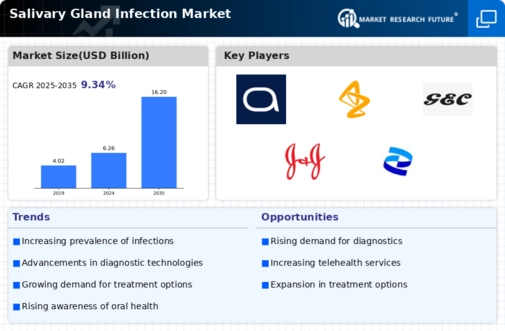
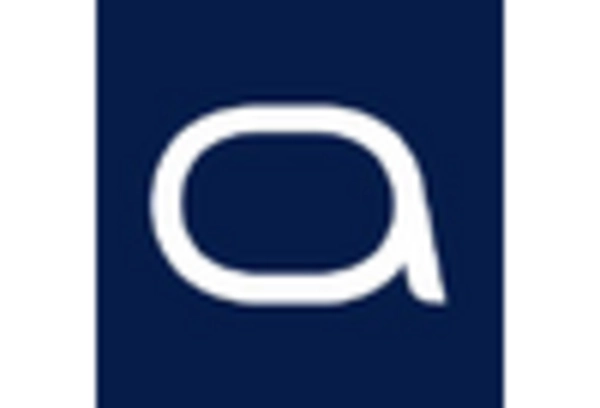
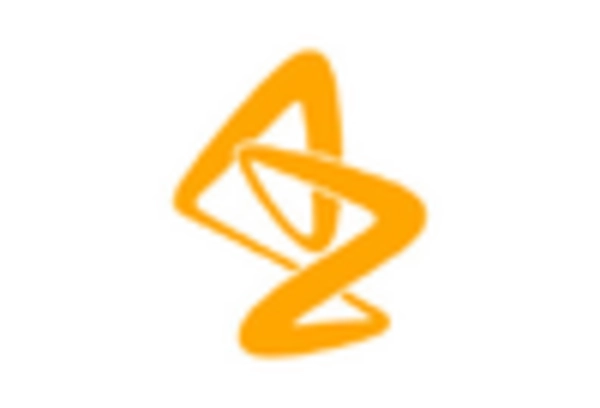

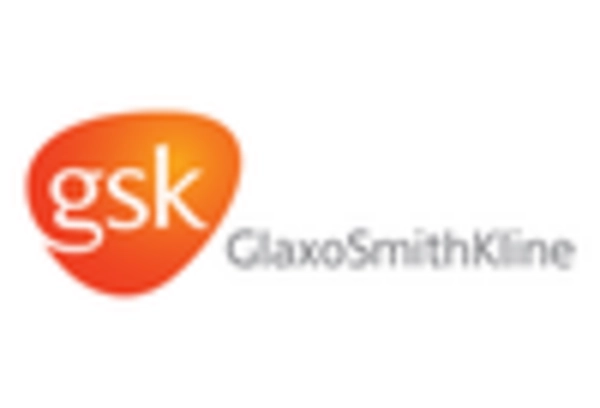

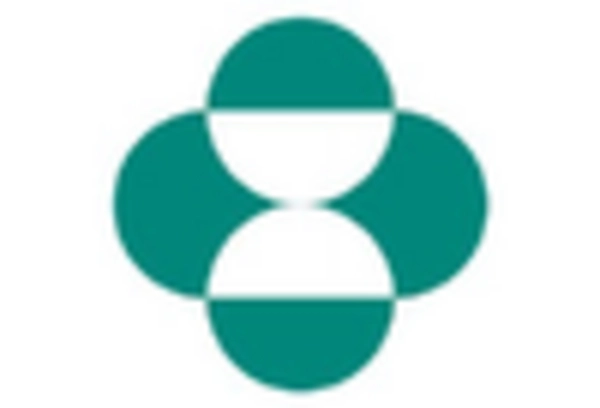









Leave a Comment